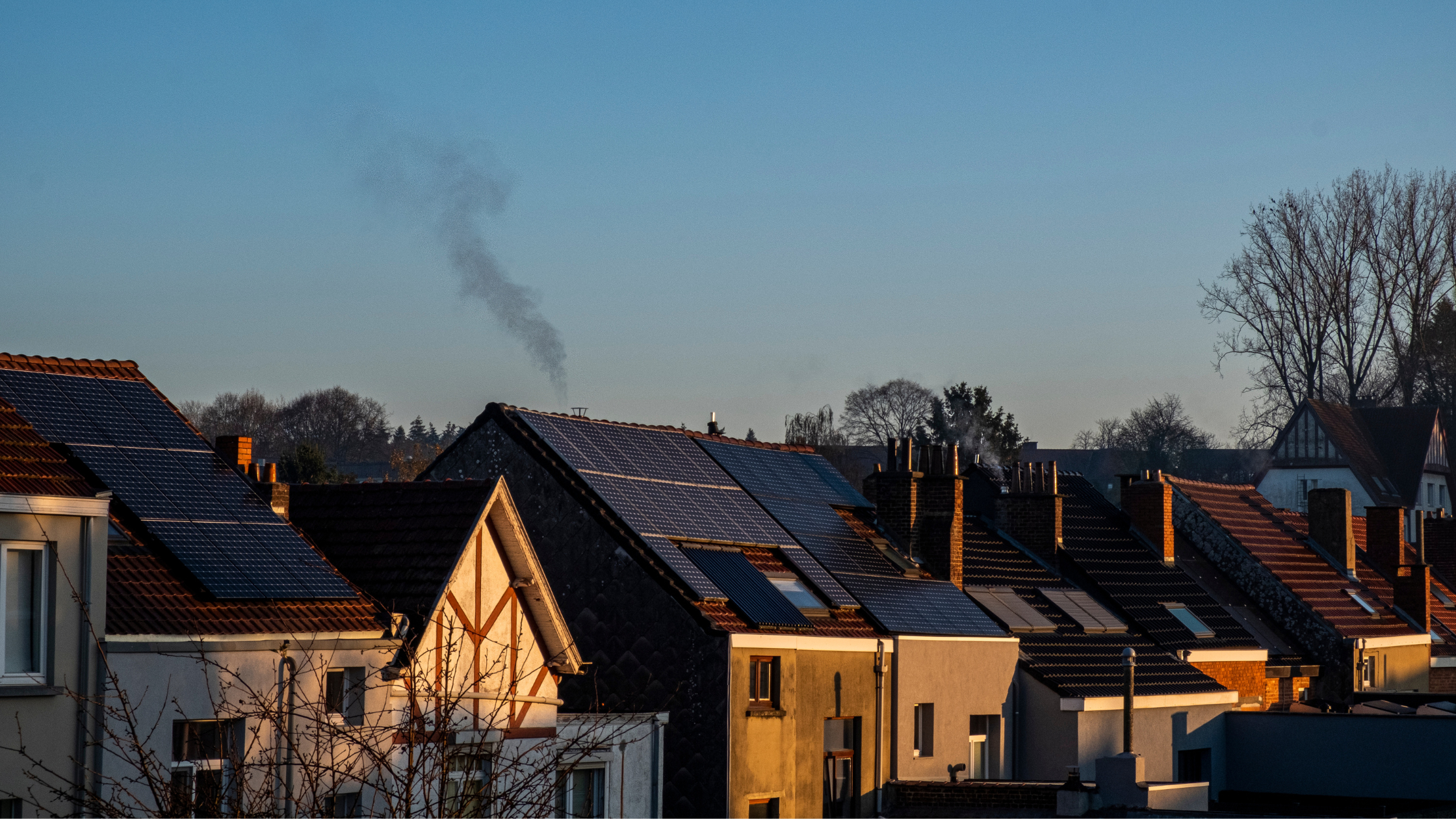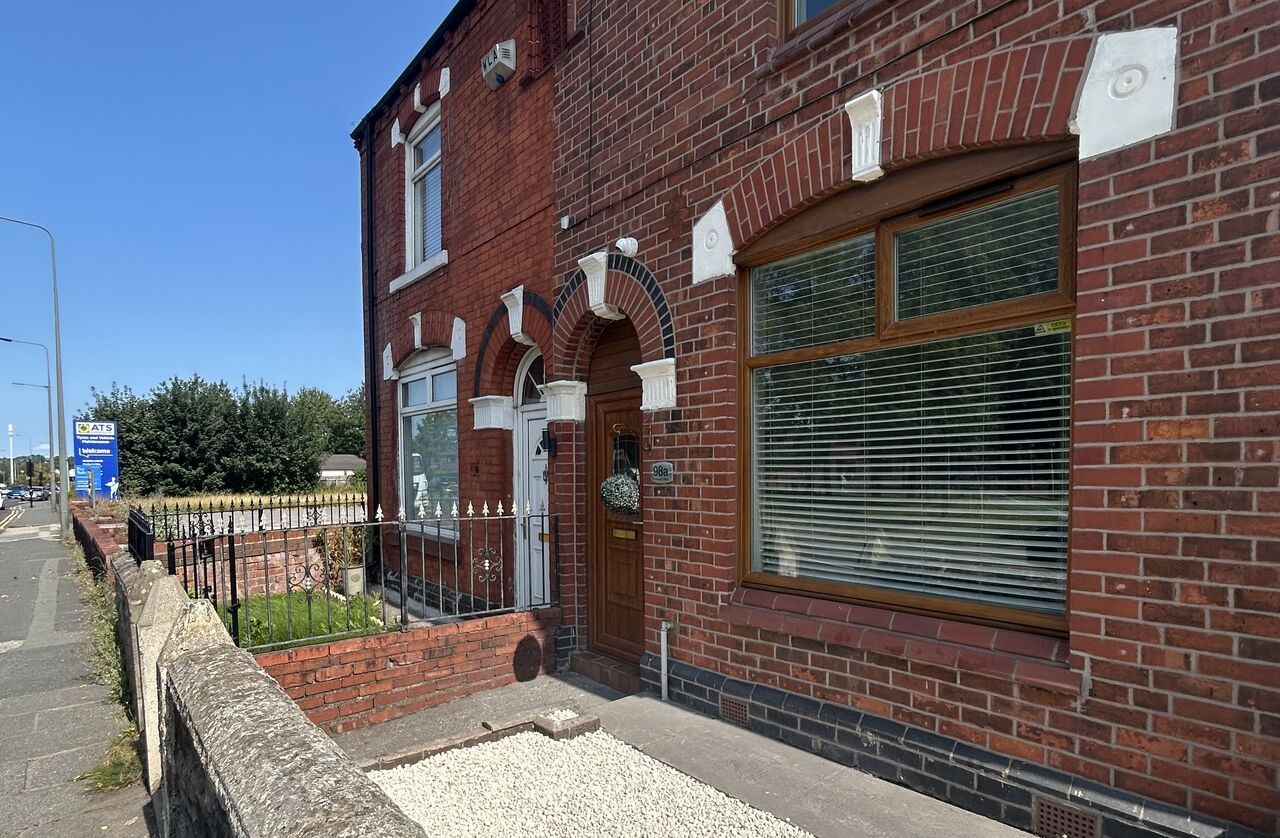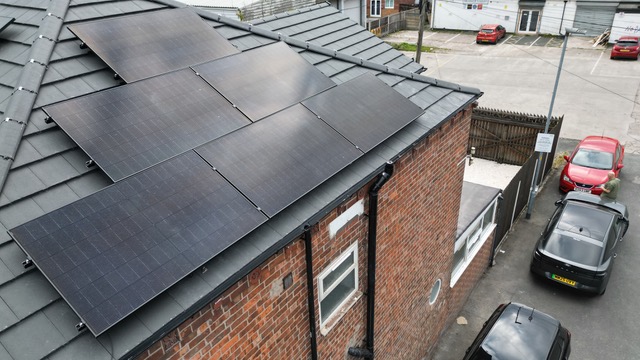A New Standard for Safe, Supported Living
In the supported homes across preston, chorley & greater manchester, social housing providers face twin pressures: an acute shortage of supported homes and the urgent mandate to eradicate damp and mould. National surveys show that damp and mould plague roughly 177,000 social homes across England, posing serious health risks in response, and with Awaab’s Law coming into force to compel swift damp and mould remediation. Blueprint Housing and Investments has stepped up with practical solutions. This blog goes behind the build of two recent projects – Boundary Street in Leyland (South Ribble) and Slaidburn Road in Ribbleton (Preston) – to see how a people-first approach and modern technology are delivering long-lasting, safe homes for those who need them most.
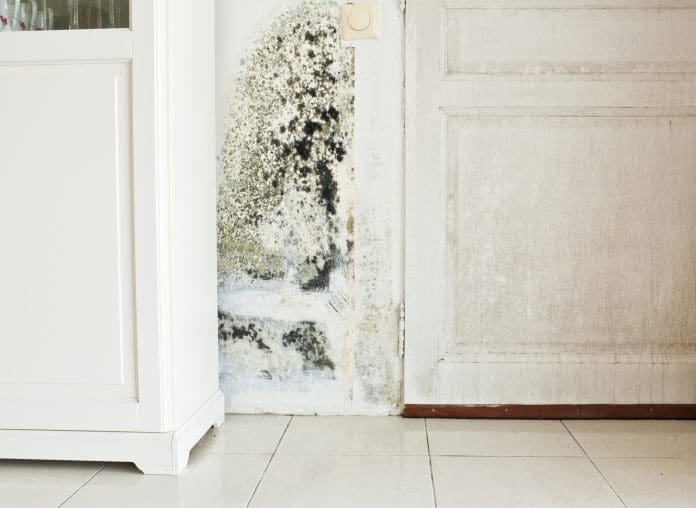
Damp and mould in homes isn’t just unsightly – it’s dangerous. The death of two-year-old Awaab Ishak in 2020, caused by prolonged exposure to mould, underscored the tragic consequences of ignoring these issues gov.uk. New legislation now forces landlords to tackle damp and mould hazards promptly gov.uk, making proactive solutions more critical than ever.
Awaab’s Law to force landlords to fix dangerous homes – GOV.UK
From Derelict Houses to Homes with Heart
Boundary Street and Slaidburn were once run-down properties transformed into supported living houses in multiple occupations (shared accommodation). Delivered in partnership with a community housing provider, the Local Authorities chosen Housing Association, each site now provides a safe, welcoming shared home for vulnerable residents who might otherwise be homeless. Blueprint’s role as a developer has been much more than bricks and mortar – it’s been about understanding the real-world challenges local authorities (LAs) and housing associations (HAs) face and addressing them with compassion and quality.
Learn more About Blueprint and our mission.
Blueprint’s approach is firmly people-first. That means listening to partners and designing homes around the needs of tenants and housing managers alike. These Northwest projects were planned together with the Local Authorities chosen Housing Association, and local stakeholders to ensure they meet rigorous safety standards (including compliance with the incoming Awaab’s Law) while also feeling like home for the residents. Each property features thoughtful details to promote tenant well-being, privacy, and independence, from the layout of bedrooms and common areas to robust ventilation and easy-to-clean finishes that keep the environment healthy. By being a visible, trusted partner on the ground, Blueprint demonstrates to councils and Housing Associations that it’s not a distant contractor but a collaborator invested in the community’s long-term success.
The result is two refurbished houses that put tenants at the centre of every decision, providing dignity, safety, and stability for years to come.
Pioneering Technology to Tackle Damp and Mould
One key innovation sets these projects apart: Nexgen’s infrared heating wallpaper system virtually eliminates damp and mould at the source. Blueprint worked with NexGen to install this “electric wallpaper” on the ceilings of every room.
How does it work?
Unlike traditional radiators, which only heat the air, this ultra-thin carbon-based wallpaper emits far-infrared energy that warms the walls and surfaces directly, much like gentle sunshine, as seen on scottishhousingnews.com.
Keeping the building fabric warm prevents moisture from condensing on walls and thus stops mould before it starts (see where we used it here). The walls become part of the heating system, staying dry and inhospitable to mould spores. As NexGen aptly puts it, “Say goodbye to damp and mould!” – the infrared energy evaporates moisture out of the walls in double-quick time, and built-in humidity sensors trigger the system automatically if dampness creeps back.
This technology isn’t a gimmick; it’s a game-changer for social housing. The house in Leyland was the first supported living project in the UK to use infrared anti-mould wallpaper, helping it achieve a remarkably high energy performance rating (EPC B) that surpasses social housing targets (typically EPC C). In practice, the system is 400% more efficient to run than a standard gas boiler and comes with a 15-year guarantee for peace of mind.
Residents get a comfortably heated home with lower bills, and the housing provider receives a property far less prone to damp issues or heating breakdowns. It’s a win-win that addresses the tenant’s health and the landlord’s compliance obligations under one solution.
Building in Quality: More Than Just a Quick Fix
Blueprint understood from the outset that lasting quality, not quick fixes, was the only way to truly help overstretched housing teams. Both Northwest homes are packed with preventative design features that reduce the need for reactive repairs and callouts. Key upgrades include:
- Anti-mould infrared wallpaper: Heats surfaces and keeps walls dry, preventing the conditions that lead to mould growth. By tackling the root cause (condensation), this solution breaks the cycle of repeatedly treating mould on the same walls.
- Renewable energy systems: Each house has solar panels and battery storage to generate green electricity on-site. This cuts utility costs for tenants and the housing association and ensures the heating system has a reliable, low-cost power supply even during peak times.
- Efficient Heating Source: Heat pumps to provide hot water with minimal energy use, or storage heaters that are energy efficient. It maintains comfortable indoor temperatures year-round while keeping carbon emissions low.
- Robust ventilation and materials: Enhanced ventilation helps manage humidity, and moisture-resistant paints and finishes add an extra layer of protection. Durable, easy-clean surfaces were chosen wherever possible to simplify maintenance.
By investing in these measures, Blueprint helps housing providers get ahead of issues instead of constantly reacting. Traditionally, a tenant might report a damp patch, and a maintenance officer would be dispatched to bleach and re-paint, only for mould to return months later, prompting multiple call-outs year after year. It’s the classic “sticking plaster” approach to damp. With budgets and staff “squeezed to breaking point,” many housing associations struggle with this cycle of reactive maintenance.
Blueprint’s projects offer a different path: designing out the problem from day one. When walls stay dry and warm, there are no mould complaints to chase. When heating and ventilation are efficient, tenants are less likely to resort to unsafe measures that might cause condensation. In short, these homes were built to minimise strain on housing teams by minimising things that go wrong.
Exceeding Expectations for Tenants and Landlords
What does all this mean for the people living in and managing these homes? For tenants, it means a healthier, more comfortable life. They can breathe easy (literally) knowing their rooms won’t grow black mould in the corners or give them chronic coughs. They don’t have to choose between turning the heat up or risking damp – the new systems keep the home warm affordably, well beyond typical expectations. In fact, in trials of the same infrared technology elsewhere, residents have reported that “it heats up really fast” and they only need it on for a couple of hours to stay warm all day. One tenant noted her home is “never cold in here now”, whereas before she had to run heating 24/7 to maintain comfort. That kind of outcome speaks to real quality of life improvements: lower energy bills (helping those on tight incomes), better health, and the simple human comfort of a warm, dry home.
For housing providers and local authorities, these projects are proof that doing it right pays off. The homes not only meet all current regulations but actually exceed them, from energy performance to safety. By delivering an EPC B rating, Blueprint’s builds are already aligned with future efficiency goals and insulating tenants against rising energy costs. And by guaranteeing a mould-free environment, they directly address the spirit of Awaab’s Law, providing tenants with the safe, decent living conditions they deserve.
Importantly, preventative design means fewer emergency repairs: housing officers aren’t getting called out at 10 pm because of a dripping ceiling or a broken heater in these homes. Over time, that represents significant savings in maintenance budgets and allows housing staff to focus on supportive services rather than firefighting property issues.
It’s a model of cost-effectiveness through care – spend a bit more effort and thought upfront to save everyone (landlords, tenants, and even the NHS) much more in the long run
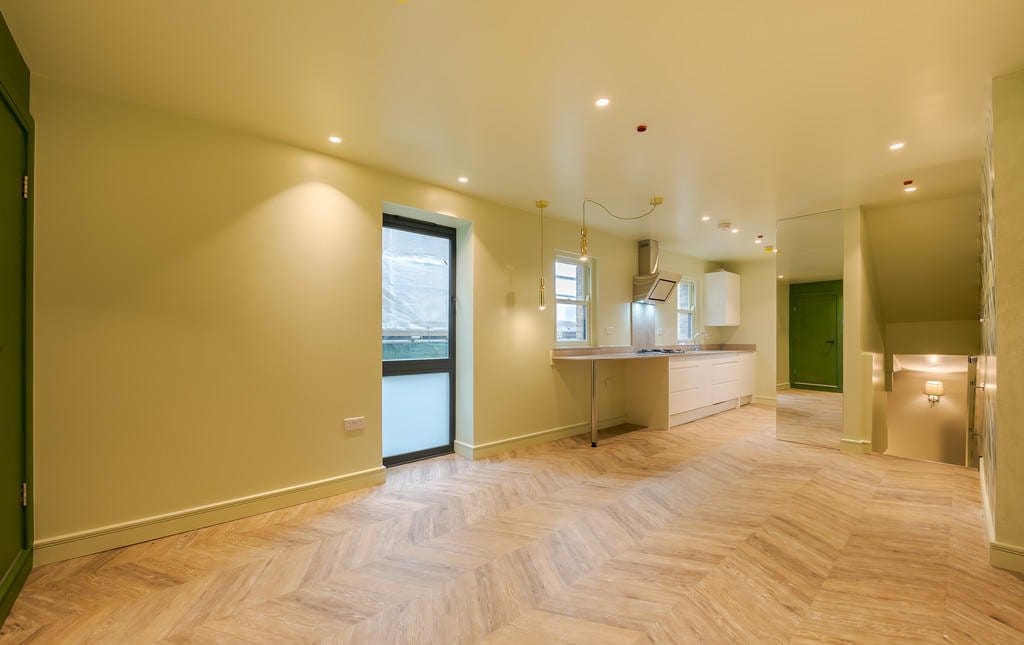
A look inside a property with the infrared heating system shows how it is completely hidden in the ceilings, freeing up space and eliminating the need for bulky radiators.
The result is a clean, modern interior that feels like any other home, except this one stays warm and dry with minimal energy use.
Long-Term Partners in Problem Solving
Blueprint’s Behind the Build story in Leyland and Ribbleton showcases what’s possible when a developer truly prioritizes quality, safety, and the end-user’s well-being. There’s nothing “fast-build” or cut-rate about these projects – from the choice of technology to the finishes, every element was chosen to serve a purpose and stand the test of time. This careful, tenant-centric ethos builds trust not only with residents (who can tell when a home has been thoughtfully crafted for their needs) but also with the housing associations and councils who partner with Blueprint. They see a developer who gets it – who understands compliance challenges, who innovates to reduce maintenance burdens, and who ultimately delivers on promises. It’s telling that Local Authorities chosen Housing Association’s leadership praised the Leyland project’s “anti-mould design” for providing homes that promote well-being rather than just basic housing, and viewed it as a springboard to future collaborations in tackling homelessness across the region.
In the world of social housing, where needs are great and resources tight, Blueprint is demonstrating a way forward: solve problems the right way, with an unwavering focus on those living in the homes. Whether it’s deploying cutting-edge Touchbase communication devices to enhance tenant safety and independence or pioneering building materials to prevent hazards, the philosophy is the same – better outcomes for people first, and everything else follows. These two North West developments are more than just construction projects; they are a commitment to doing social housing differently. By creating environments that keep tenants healthy, safe, and comfortable, Blueprint is helping its partners in local authorities and HAs fulfill their mission under challenging conditions. And by sharing lessons behind the build, we hope to inspire more in the industry to put quality and care at the heart of every decision. After all, when tenants are at the centre of the blueprint, the housing that emerges isn’t just a roof over their heads – it’s a foundation for a better life.
Explore Further
Learn more about Blueprint’s mission on our About Us page, or read how we’re leveraging technology in social housing – from anti-mould innovations to smart safety solutions like Touchbase – to meet the current demand in the assisted living market. Each project is a step toward safer, healthier homes for all.

